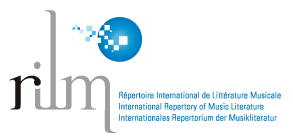Polirritmias, hemiolas y flexibilización del ritmo y la métrica en tangos de fines del siglo XIX y principios del siglo XX
Palabras clave:
tango, influencias afro, hemiolas, síncopasResumen
En tangos de finales del siglo XIX y principios del siglo XX consultados, encontramos una tendencia a la flexibilización del ritmo y la métrica a través del uso de hemiolas verticalizadas o consecutivas, síncopas y polirritmias, que evidencian una “ascendencia afro” y que creemos vale la pena analizar para una adecuada reconstrucción de la etapa gestacional y de la “Guardia Vieja” del tango. Nos centramos en conductas rítmicas atípicas dentro de lo que el género luego va a privilegiar, ya que lo que abordamos son tangos de entre 1880 y 1915, reconociendo rasgos propios de un proceso de binarización de los ternarios africanos en América Latina, siguiendo a Pérez Fernández. El enfoque que proponemos es el análisis musicológico de los registros escritos. Tendremos en cuenta, para visualizar los elementos afro y efectuar una oportuna comparación, contradanzas, guarachas y habaneras cubanas decimonónicas, que son, ciertamente, las antecesoras de las habaneras que llegan a nuestro suelo importadas desde Europa.
Descargas
Publicado
Número
Sección
Licencia
Derechos de autor 2020 Ana Belén Disandro

Esta obra está bajo una licencia internacional Creative Commons Atribución-NoComercial 4.0.
Atribución/Reconocimiento-NoComercial 4.0 Internacional
https://creativecommons.org/licenses/by-nc/4.0/
Usted es libre de:
- Compartir — copiar y redistribuir el material en cualquier medio o formato.
- Adaptar — remezclar, transformar y construir a partir del material.
- La licenciante no puede revocar estas libertades en tanto usted siga los términos de la licencia
Bajo los siguientes términos:
- Atribución — Usted debe dar crédito de manera adecuada, brindar un enlace a la licencia, e indicar si se han realizado cambios. Puede hacerlo en cualquier forma razonable, pero no de forma tal que sugiera que usted o su uso tienen el apoyo de la licenciante.
- No Comercial — Usted no puede hacer uso del material con propósitos comerciales.
- No hay restricciones adicionales — No puede aplicar términos legales ni medidas tecnológicas que restrinjan legalmente a otras a hacer cualquier uso permitido por la licencia.
Avisos:
No tiene que cumplir con la licencia para elementos del material en el dominio público o cuando su uso esté permitido por una excepción o limitación aplicable.
No se dan garantías. La licencia podría no darle todos los permisos que necesita para el uso que tenga previsto. Por ejemplo, otros derechos como publicidad, privacidad, o derechos morales pueden limitar la forma en que utilice el material.






